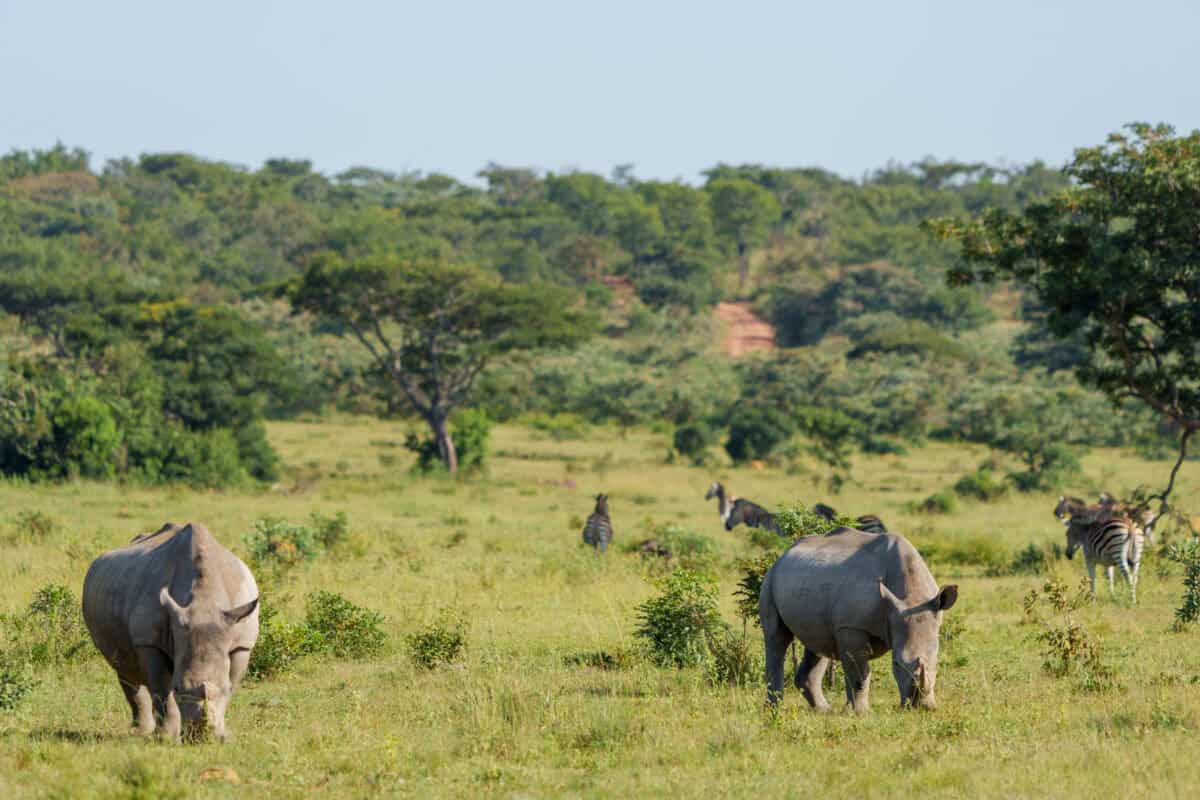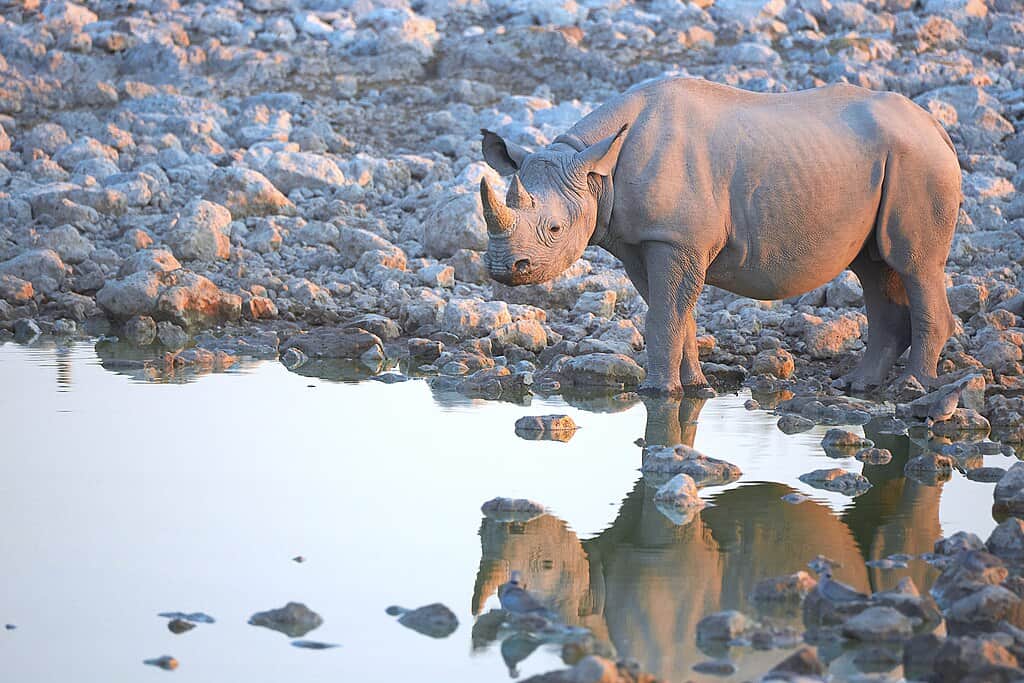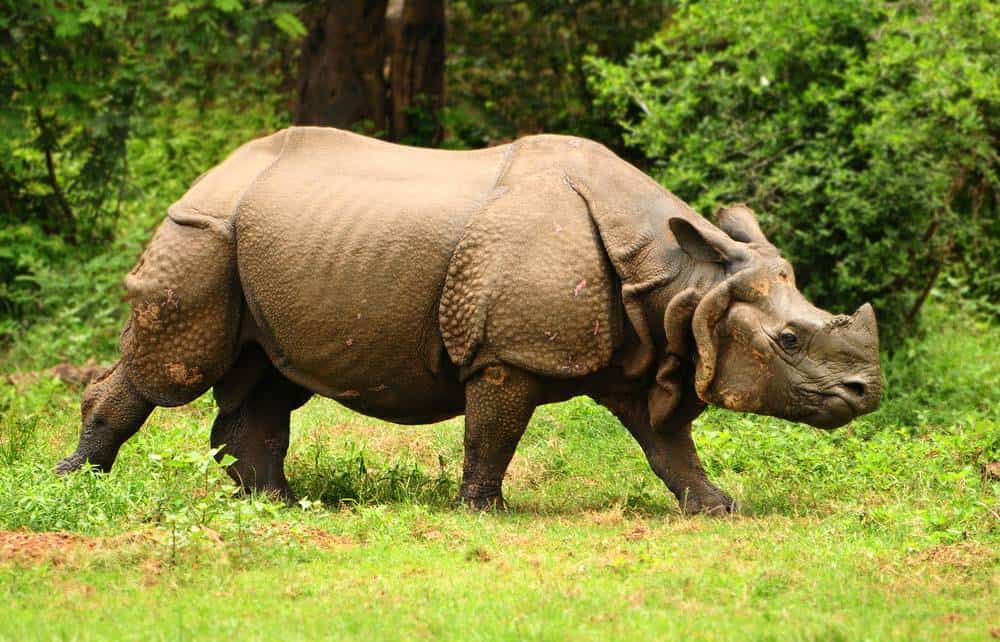On the 25th of June, 2024, a team of scientists from South Africa made history by inserting radioactive isotopes into the horns of rhinos in an effort to devalue rhino horn as a commodity. Here’s a deep dive into the project and the issue of rhino poaching.
Introduction

Over the last decade, close to 10,000 rhinos have been lost to poaching. This number is staggering, considering that, today, there exist only around 27,000 rhinos in the wild. Much effort has been made by organizations dedicated to the conservation of wildlife, and rhinos in particular, to curb the poaching and prevent all-out extinction.
Quick Stats

There are five extant species of rhinos: white, black, Indian, Javan, and Sumatran. All five species are considered threatened, with the black, Javan, and Sumatran rhinos being critically endangered according to the IUCN Red List. Just a quick glance at their population numbers informs how dire the situation is. Enter the Rhisotope Project.
The Rhisotope Project – Beginnings

This project was founded in 2021 by Suzanne Boswell and Professor James Larkin, radiation and health physics unit director at the University of the Witwatersrand, South Africa. The intention behind the project is to devalue the rhino horn, which is considered the most valuable false commodity on the black market.
The Rhisotope Project – So What Are They Doing?

Radioisotopes are inserted into rhino horns through small holes that are drilled in, and then sealed. Their purpose is to 1) devalue the horn as it is now “tainted,” and 2) enhance the detection and traceability of the horn at border controls, harbors, and airports. Security includes nuclear detection and radiation portal monitors, which should pick up the radioisotopes in the horns. This greatly increases the risks for smugglers, and reduces the value of the horn as a commodity.
The Rhisotope Project – Science

According to Prof. Larkin, radioactive molecules and atoms are naturally unstable and emit particles or rays as they decay. The radioisotopes they are utilizing emit gamma rays, which are similar to X-rays. This property can be used as a tracking device because, when a horn passes through a monitor at an airport, it triggers the detectors, alerting security, and the horn can be retrieved.
Will It Harm The Rhino?

The rhinos are not harmed in this process. The Rhisotope team have worked meticulously, using computer modelling and testing on “phantoms,” to determine the appropriate quantities that can safely be inserted into the horn without any negative side effects to the animal. These quantities are minute but still detectable by radioactive scanners.
Project Implementation

Twenty rhinos are included in the implementation of the project. They have each had the radioisotopes injected into their horns, and will be monitored closely for the next 6 months. At which point the team will take follow-up blood samples to ensure that the rhinos had been effectively protected against the radiation. The project can then be expanded to include many more rhinos.
Treatment Longevity

According to Prof. Larkin, the material will last approximately 5 years in the horn. This is more feasible and cheaper than dehorning rhinos, which is done safely and ethically, every 18 months.
Why Do Poachers Want Rhino Horns Anyway?

Rhino horn is highly valued on the black market primarily for its use in traditional Chinese medicine. It is believed to have various healing properties, including fever reduction and detoxification. However, there is zero scientific evidence supporting these claims. Furthermore, rhino horn is carved into luxury items, such as dagger handles, to be used as symbols for wealth and status. The low population number of rhinos—i.e. their “rarity”—and the illegal nature of the trade further elevate the price, making it one of the most expensive wildlife products.
Why Can’t They Take The Horn Without Unaliving The Rhino?

Horns are deeply embedded into the skulls of rhinos, and poachers intend to get the full horn to trade with. Further, if they only tranquilise the animal, they run the risk of it waking up very aggressive.
Flooding The Market?

There has been much discourse surrounding legalizing the trade of rhino horns and removing the horn ethically to flood the market, thereby devaluing the horn. The primary issue with this is that it is difficult to flood a market of which we don’t have a clear idea of the value. Further, the Convention on International Trade in Endangered Species of Wild Fauna and Flora (CITES) has banned international trade in rhino horn. Changing this would require a significant shift in international consensus and policy.
Other Conservation Measures

There are numerous initiatives that contribute to rhino conservation worldwide. These include high-security wildlife reserves, breeding programs, advanced tracking and monitoring systems, and specialized ranger training. Despite this, around 1,000 rhinos on average are poached every year.
White Rhinos

Currently, the Rhisotope Project has been implemented with only twenty white rhinos in South Africa. Once the approach has been deemed successful after the 6-month trial, it can be implemented with more rhino and across the other species.
White rhinos (Ceratotherium simum) are divided into two subspecies: the northern white rhino (Ceratotherium simum cottoni) and southern white rhino (Ceratotherium simum simum). The northern white rhino is functionally extinct as there exists only two left, both females, named Najin and Fatu. They live in captivity in Kenya and are protected by armed guards. Conversely, there are about 16,000 southern white rhinos roaming in the southern African wild.
Black Rhinos

Black rhinos (Diceros bicornis) are native to eastern and southern Africa. There are three surviving subspecies of black rhinos, and three that have gone extinct in modern times. The most recent subspecies declared extinct was the western black rhinoceros (Diceros bicornis longipes) in 2011.
Indian Rhinos

Indian rhinos (Rhinoceros unicornis) are native to, yes, India. They differ from African rhinos in that they have only one horn, whereas Africa rhinos have two. There are currently around 4,000 individuals in the wild, which has increased significantly (167%) since the 1960s, when the population was estimated at around 1,500 individuals. They are still threatened by poaching, and are listed as Vulnerable by the IUCN Red List.
Javan Rhinos

Javan rhinos (Rhinoceros sondaicus) used to inhabit much of southern Asia. Today, with only 76 alive, their range is within one nationally-protected area, called Ujung Kulon National Park, located in Java, Indonesia. In 2023, Indonesian authorities captured two gangs of poachers who confessed to poaching 26 Javan rhinos over the preceding 4 years.
Sumatran Rhinos

Sumatran rhinos (Dicerorhinus sumatrensis) are one of the most critically endangered animals in the world, with less than 50 individuals remaining. They are also the smallest of the extant rhino species. Historically, their range was similar to that of the Javan rhinos. Today, there are a few individuals scattered around Indonesia. An additional risk these rhinos face, unfortunately, is the negative effects of inbreeding.
Wrapping Up

I know these facts and statistics are heart-wrenching. I myself feel exhausted after researching this topic. But I think it was important to detail the magnitude of the problems that both rhinos and the conservationists and researchers trying to protect them face. At the current rate, rhinos as a whole won’t be around in a few decades. The very least we can do is spread awareness, which is what I’ve tried to do with this article.
Conclusion

Thanks for reading! I’d love to hear your thoughts.
You can also check out a video on the Rhisotope Project here.
Join our Forum for free today!

- Nuclear Tech to Combat Poaching: Radioactive Rhino Horns - July 2, 2024
- 42,000 Year-Old Perfectly Intact Horse Discovered In Permafrost - June 26, 2024
- Baby Elephant Finally Free From Life in Chains! - June 22, 2024
